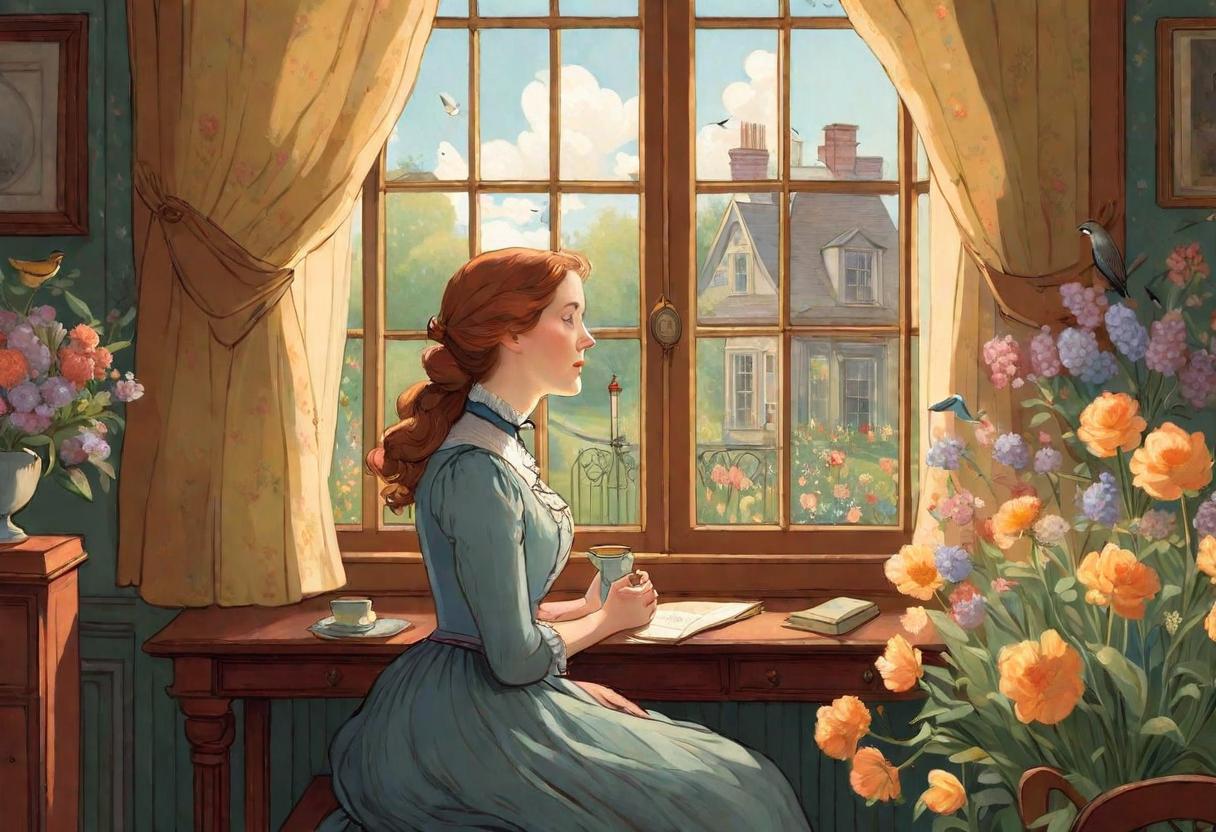Louise Mallard sat in her room, looking out the window. Outside, everything was lively with the sounds of spring, but inside, she felt many different feelings. Just a little while ago, she got the surprising news: her husband, Brently, had died in a terrible accident. “The Story of an Hour: A Journey of Freedom”
Introduction to “The Story of an Hour”:
“The Story of an Hour” is a powerful short story written by Kate Chopin, first published in 1894. It explores themes of freedom, identity, and the constraints of marriage. The story unfolds over a single hour, revealing the complex emotions of a woman who grapples with the idea of independence after the loss of her husband.

Background of the Story:
Kate Chopin was an American author known for her keen insights into the lives of women in the late 19th century. “The Story of an Hour” is one of her most famous works, often studied for its themes and symbolism. The story reflects the societal norms of the time and challenges the traditional roles of women, making it a significant piece of feminist literature.
Main Characters:
Louise Mallard
Louise Mallard is the protagonist of the story. She is a young woman who experiences a profound transformation after learning of her husband’s death. Louise is initially filled with grief, but as the story unfolds, she discovers a sense of freedom that surprises her.
Brently Mallard
Brently Mallard is Louise’s husband. Although he is not present in the story, his character plays a crucial role in shaping Louise’s feelings. His presumed death prompts Louise to confront her feelings about their marriage and her own identity.
Josephine
Josephine is Louise’s sister. She cares deeply for Louise and tries to support her during her time of grief. Josephine’s concern reflects the traditional role of women in society, as she is expected to be nurturing and protective.
Detailed Summary of the Story:
The story begins with the news of Brently Mallard’s death reaching Louise Mallard. Louise’s sister, Josephine, gently tells her the news, fearing Louise might have a heart problem. Louise initially reacts with shock and sorrow. She retreats to her room to be alone.
As she sits in her chair by the window, Louise starts to think. She looks outside and sees the beauty of the world. She notices the trees, the birds singing, and the sky filled with sunlight. This moment changes everything for her. Instead of feeling only sadness, she begins to feel a sense of freedom. She realizes that she will no longer be tied down by her husband’s presence.
Louise thinks about her life and how she has lived for others. She reflects on the years of being a wife and how those years often meant putting her own dreams aside. Now, she feels a sense of joy and hope for the future. She whispers, “Free, free, free!” to herself, embracing her newfound independence.
However, just as Louise starts to imagine her life ahead, Brently Mallard walks in through the front door. He is alive and unaware of the news that has just spread. The shock of seeing him causes Louise to faint, and she falls to the floor. Doctors later say she died from the shock of joy, but in reality, it was the loss of her dream of freedom that killed her.
Themes:
Freedom and Independence
One of the most important themes in “The Story of an Hour” is freedom. Louise experiences a brief moment of liberation when she realizes that she no longer has to live for someone else. Her heart fills with the desire for a life of her own. This theme reflects the struggles many women faced in the past when marriage often meant losing personal freedom.
Marriage and Identity
The story also explores the idea of marriage and how it can affect a woman’s identity. Louise’s marriage to Brently has made her feel confined. She feels like she has to follow societal expectations. The moment she believes her husband is dead, she starts to see who she really is, separate from her role as a wife.
The Nature of Life and Death
Chopin plays with the concepts of life and death throughout the story. Louise experiences the death of her husband but also the birth of her new self. The ending brings a twist, where life and death intersect dramatically, highlighting the fragility of both.
Symbols:
The Open Window
The open window in Louise’s room symbolizes freedom and new beginnings. As she looks outside, she sees a world full of life and possibilities. The window represents her escape from the constraints of her marriage.
The Heart Trouble
Louise’s heart trouble symbolizes the emotional strain of her life. It hints at her struggle to fit into the role of a submissive wife. When she feels joy at her husband’s death, it also shows her heart’s longing for freedom.
Analysis:
The Irony of Freedom
The story’s irony is significant. Louise’s freedom comes at the cost of her husband’s life, and her joy is short-lived. Chopin uses this irony to show how society often traps women. Louise’s dream of a new life is taken away just as quickly as it appears, highlighting the harsh realities many women face.
The Role of Women
Chopin critiques the traditional roles of women through Louise’s character. Louise’s experience is a reflection of how women were often expected to prioritize their husband’s needs over their own desires. This theme invites readers to consider the ongoing struggle for gender equality.
Conclusion:
“The Story of an Hour” is a powerful exploration of freedom, identity, and the constraints of marriage. Through Louise Mallard’s brief journey toward self-discovery, Kate Chopin sheds light on the struggles women faced in the 19th century. The story encourages us to think about our own lives and the freedoms we cherish. It serves as a reminder that true happiness often comes from within and that the desire for independence is a natural and vital part of being human.
